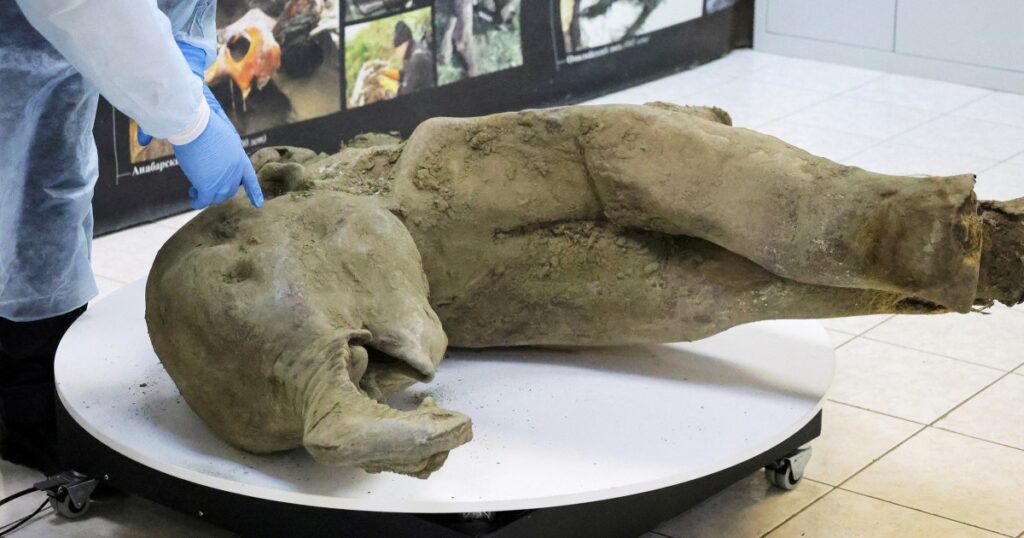A baby mammoth that lay almost perfectly preserved for 50,000 years in the now-melting permafrost of eastern Siberia has been unveiled by a team of scientists.
The mammoth was a “unique research find” with scientists “all surprised by its exceptional preservation,” said Anatoly Nikolaev, rector of the Lazarev Mammoth Museum Laboratory at the North-Eastern Federal University in Yakutsk, eastern Siberia. The body showed no signs of damage to the head, trunk, ears and mouth, he said.
“Yana is definitely the best-preserved in the world,” the NEFU scientists stated in a press release on Monday.
The carcass of the baby mammoth, dubbed “Yana” after the Yana River basin where it was found in eastern Siberia, Russia, was unveiled by researchers on Monday. It was only the seventh baby mammoth carcass discovered globally — six in Russia and one in Canada.
The mammoth is 4 feet tall, weighs about 400 pounds and is less than 6.6 feet long, according to the press release.
This discovery is expected to provide valuable insights into the development of mammoths, their adaptive traits, the environmental conditions of their Ice Age habitats, and other important aspects of their lives, Maxim Cheprasov, the head of the University’s Mammoth Museum’s laboratory said in the press statement.
Yana was found by local residents in June in the Batagaika crater, the world’s largest permafrost crater, which is widening as a result of climate change as the ground melts, a press statement said.
The discovery was made by local residents of the village of Bataga, according to Russian state media outlet, TASS.
“The locals happened to be at Batagaika at the right time and noticed that the mammoth calf had partially thawed from the wall, about [130 feet] below the surface,” Cheprasov told the Russian state outlet.

The mammoth is estimated to have been about one year old when it died, according to the press release. However, scientists at the Lazarev Mammoth Museum Laboratory, which specializes in the study of mammoths and their Ice Age environment, is conducting further tests to confirm exactly how old the animal was when it died.
According to their website, they are collaborating with genetic researchers from other regions of the Russian Federation to uncover more about Yana’s life and environment.
Russia’s permafrost, now thawing due to climate change, has uncovered several incredible prehistoric discoveries in recent years.
In 2020, scientists in the Yakutia, the north-eastern part of Siberia, unearthed part of a mummified sabre-tooth cat estimated to be approximately 32,000 years old.
The following year, in 2021, researchers discovered the remains of a 44,000-year-old wolf in the same region.













